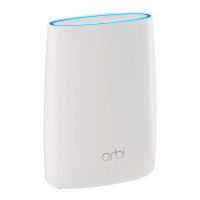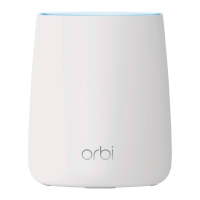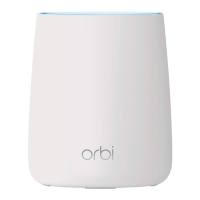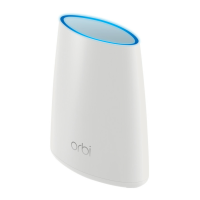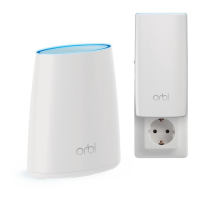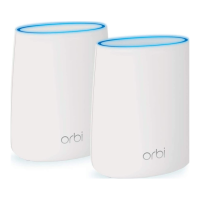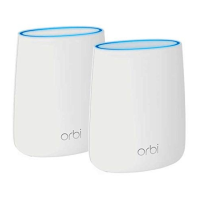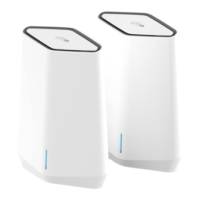Technical Specifications
The following table shows the technical specifications for the Orbi Outdoor Satellite.
Table 4. Orbi Outdoor Satellite specifications
DescriptionFeature
TCP/IP, RIP-1, RIP-2, DHCP, PPPoE, PPTP, Bigpond,
Dynamic DNS, UPnP, and SMB
Data and routing protocols
120V, 60 Hz, input
12V, 2.5A DC, output
Power adapter
8.3 x 2.7 x 10.6 in. (210.82 x 68.58 x 269.24 mm)Dimensions
3.06 lb (1.387 kg)Weight
4°F to 122°F (–20°C to +50°C)Operating temperature
90% maximum relative humidity, noncondensingOperating humidity
IP55IP rating
FCC Part 15 Class B
VCCI Class B
EN 55 022 (CISPR 22), Class B C-Tick N10947
Electromagnetic emissions
Maximum wireless signal rate complies with the IEEE
802.11 standard.
2
WiFi
2.4 GHz: Max. 400 Mbps
5 GHz Front haul: Max. 866 Mbps
5 GHz Back haul: Max. 1733 Mbps
Radio data rates
IEEE 802.11b/g/n 2.4 GHz-256 QAM support
IEEE 802.11a/n/ac 5 GHz-256 QAM support
Data encoding standards
Limited by the amount of WiFi network traffic generated by
each node (typically 50–70 nodes)
2.4 GHz: 127
5 GHz (front haul): 127
Maximum number of computers
per wireless network
2.4 GHz: 2.412–2.462 GHz
5 GHz:
• 5.18 GHz–5.24 GHz
• 5.745 GHz–5.825 GHz
Operating frequency range
WPA-PSK [TKIP], WPA2-PSK [AES]802.11 security
2
Maximum wireless signal rate derived from IEEE Standard 802.11 specifications. Actual throughput can vary. Network
conditions and environmental factors, including volume of network traffic, building materials and construction, and network
overhead, lower actual data throughput rate.
Supplemental Information
28
Orbi Outdoor Satellite
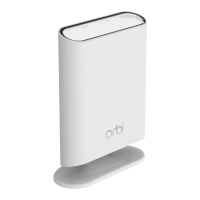
